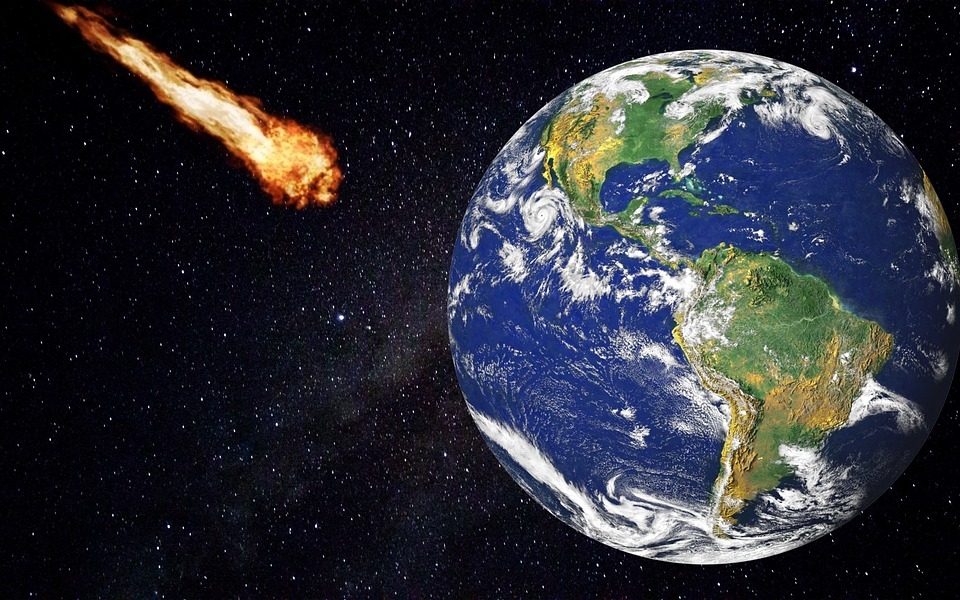When asteroids pass by, they often get as close as millions of miles away from Earth, which is still extremely far by our standards, but it is close enough to be picked up on. An asteroid that recently passed by Earth got a lot closer to the planet than the Moon itself.
NASA picked up an asteroid that was hurtling towards our planet in a very close approach. The asteroid is referred to as 2020 TS1 and is classified as a Near-Earth Object or NEO by the agency. The asteroid was traveling through space at a speed of 4.2 kilometers per second or 15,000 kilometers per hour as it approached Earth. That may seem fast but it is actually very slow in astronomical standards.
TS1 posed no threat to Earth and there was no chance of a collision as well. It also happens that TS1 measures six meters in diameter, making it a relatively small asteroid. Should it even collide with Earth, there is a chance it would burn up when it meets the atmosphere or, if it was slightly bigger, only inflict local impact, but not on a global scale. Massive asteroids, like the asteroid that triggered the extinction of the dinosaurs millions of years ago, are those that can bring on damage on a global scale.
Asteroids classified as Near-Earth Objects are usually the leftover debris coming from the Sun when it was being formed or the planets that surround the star.
Over the weekend, residents from the United Kingdom, the Netherlands, France, Luxembourg, and Belgium were able to witness a fireball passing through the skies. Over 100 people reported the incident to the International Meteor Organization, having seen a bright streak pass through the night sky, coming from the atmosphere over the Bay of Biscay and disappearing to the West of the French coast.
One witness shared that the fireball they saw was larger and brighter than what they have seen before. Fireballs, when passing through the skies, usually come apart and disintegrate before it reaches the surface. These fireballs are small meteors that come into contact with the atmosphere, with the air seeping into the cracks of the rock, making it explode.



 Why now is the time to address humanity’s impact on the moon
Why now is the time to address humanity’s impact on the moon  The brain is the most complicated object in the universe. This is the story of scientists’ quest to decode it – and read people’s minds
The brain is the most complicated object in the universe. This is the story of scientists’ quest to decode it – and read people’s minds  Synthetic human embryos let researchers study early development while sidestepping ethical and logistical hurdles
Synthetic human embryos let researchers study early development while sidestepping ethical and logistical hurdles  The Mars Sample Return mission has a shaky future, and NASA is calling on private companies for backup
The Mars Sample Return mission has a shaky future, and NASA is calling on private companies for backup  The mystery of consciousness shows there may be a limit to what science alone can achieve
The mystery of consciousness shows there may be a limit to what science alone can achieve  Orbital resonance − the striking gravitational dance done by planets with aligning orbits
Orbital resonance − the striking gravitational dance done by planets with aligning orbits  Genetic diseases: How scientists are working to make DNA repair (almost) a piece of cake
Genetic diseases: How scientists are working to make DNA repair (almost) a piece of cake  A Nasa rover has reached a promising place to search for fossilised life on Mars
A Nasa rover has reached a promising place to search for fossilised life on Mars  Dark energy is one of the biggest puzzles in science and we're now a step closer to understanding it
Dark energy is one of the biggest puzzles in science and we're now a step closer to understanding it  How do airplanes fly? An aerospace engineer explains the physics of flight
How do airplanes fly? An aerospace engineer explains the physics of flight  Why is the universe ripping itself apart? A new study of exploding stars shows dark energy may be more complicated than we thought
Why is the universe ripping itself apart? A new study of exploding stars shows dark energy may be more complicated than we thought  If life exists on Jupiter’s moon Europa, scientists might soon be able to detect it
If life exists on Jupiter’s moon Europa, scientists might soon be able to detect it  Our survey of the sky is uncovering the secrets of how planets are born
Our survey of the sky is uncovering the secrets of how planets are born  IceCube researchers detect a rare type of energetic neutrino sent from powerful astronomical objects
IceCube researchers detect a rare type of energetic neutrino sent from powerful astronomical objects  Could a telescope ever see the beginning of time? An astronomer explains
Could a telescope ever see the beginning of time? An astronomer explains 































